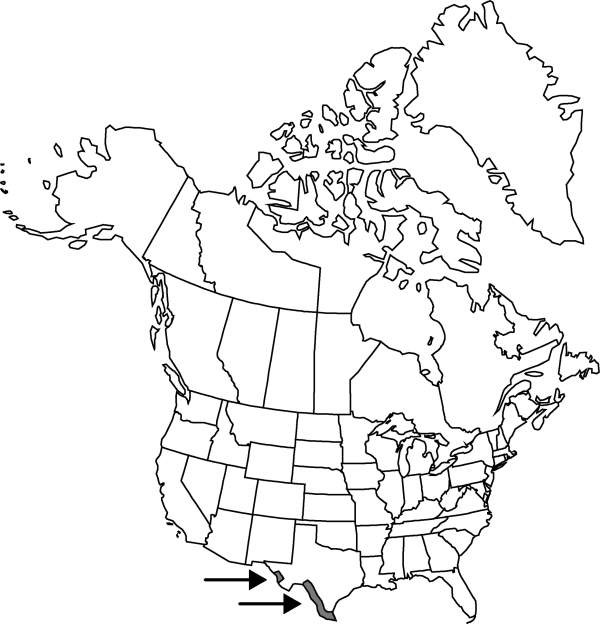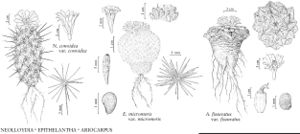Ariocarpus fissuratus var. fissuratus
Plants protruding above ground 0–2(–10) cm. Stems: tubercles forming coarse mosaic, closely packed, exposed faces of tubercles deltoid to hemispheric, deeply fissured on either side of central areolar groove, coarsely rugose, often sharply angled apically; areoles to 3 mm wide, sometimes confined to middle of tubercle faces instead of extending to tips. Flowers 2.5–5 cm diam., 2 times wider than long when fully expanded; inner tepals 21–30 × 5.5–7.5(–10) mm.
Phenology: Flowering Sep–Nov.
Habitat: Chihuahuan desert scrub, low, rocky hills of limestone chips
Elevation: 500-1500 m
Distribution

Tex., Mexico (Chihuahua, Coahuila, Durango).
Discussion
The stems of Ariocarpus fissuratus are normally flush with the soil surface and resemble limestone chips in shape, color, and texture, rendering the plants extremely cryptic. The species is often found growing with Agave lechuguilla and species of Leucophyllum, and Parthenium.
Selected References
None.
